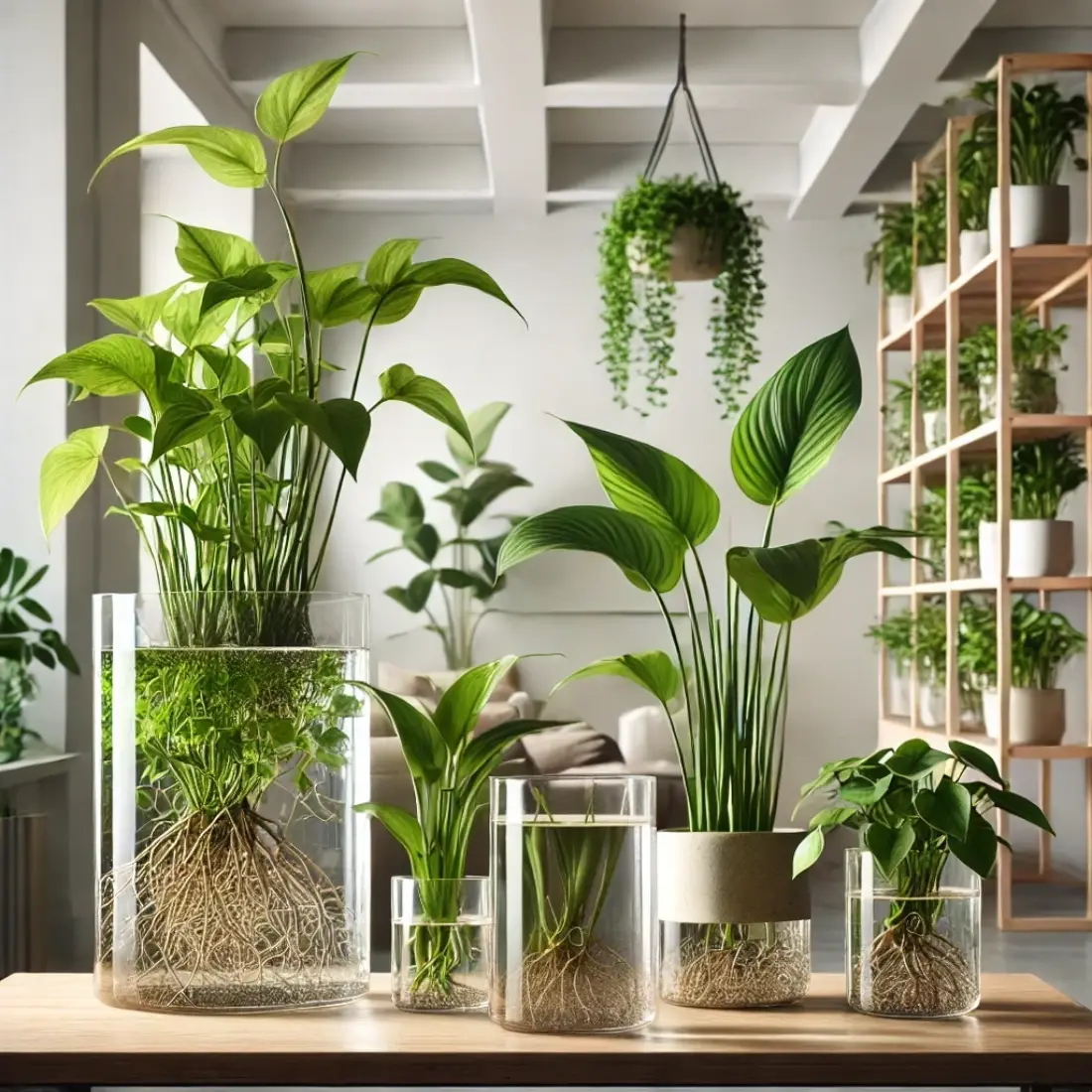Water-grown plants are an excellent choice for those looking to add greenery to their homes without the mess of soil. Growing plants in water, a method known as hydroponics, allows for a clean and efficient way to nurture your favorite houseplants.
Water-grown plants are typically easier to care for, as they require minimal maintenance and are less prone to pests and diseases commonly found in soil.One of the main benefits of water-grown plants is their ability to thrive with just water and indirect light.
This makes them perfect for indoor environments where natural light might be limited. Additionally, these plants can enhance the aesthetic appeal of any room, creating a refreshing and tranquil atmosphere.
Pothos
Description: Pothos, also known as Devil’s Ivy, is a popular houseplant known for its heart-shaped, variegated leaves and vigorous growth. It’s available in various types, such as Golden Pothos and Marble Queen.
Growing Conditions: Pothos thrives in water with minimal sunlight, making it perfect for low-light environments. Use a clear container to monitor water levels.
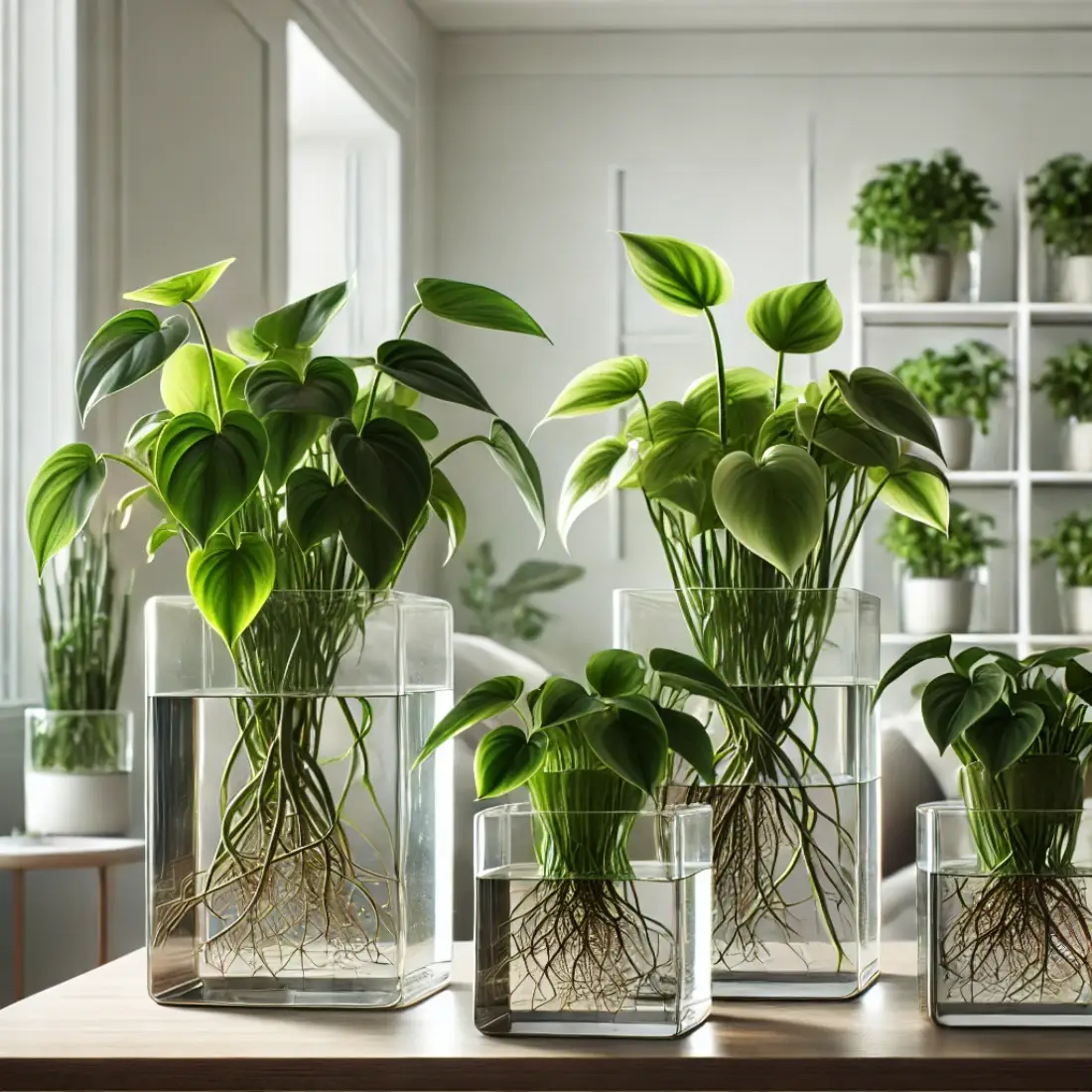
Care Tips: Change the water every two weeks and trim the roots periodically to encourage growth. Simply cut a stem with a few leaves and place it in water to propagate.
Benefits: Pothos is an excellent air purifier, removing toxins like formaldehyde and benzene from the air.
Lucky Bamboo
Description: Lucky Bamboo, often associated with Feng Shui, is known for its tall, slender stalks and lush green leaves. Despite its name, it is not a true bamboo but a type of Dracaena.
Growing Conditions: Lucky Bamboo thrives in water with indirect sunlight. Use distilled or filtered water to avoid chlorine and fluoride, which can harm the plant.
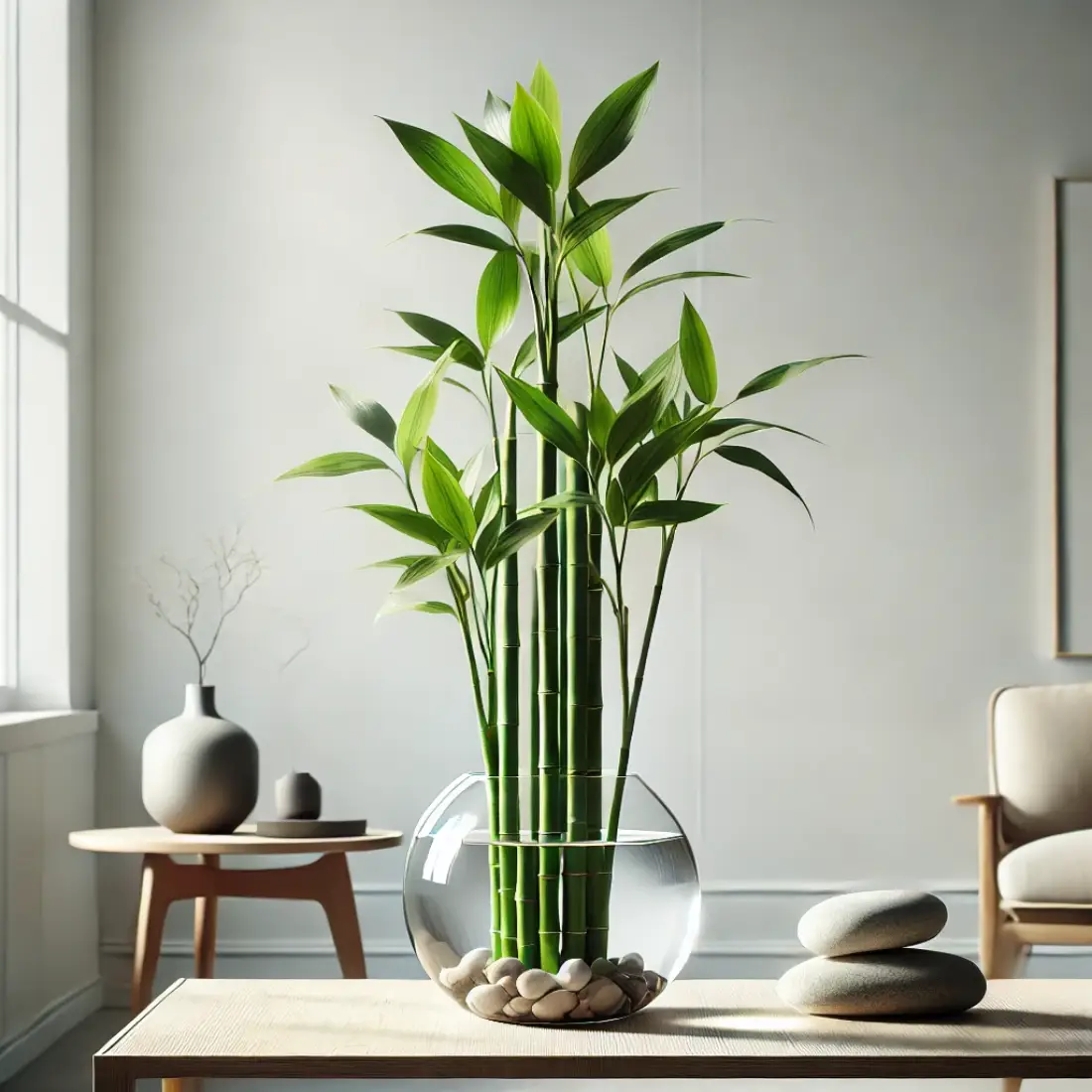
Care Tips: Change the water every two weeks and ensure the roots are always submerged. You can shape the stalks into various designs for added aesthetic appeal.
Benefits: Lucky Bamboo is believed to bring good luck and prosperity, making it a popular choice for homes and offices.
Philodendron
Description: Philodendrons are beloved for their attractive, glossy leaves and ability to thrive indoors. They come in various types, including heartleaf and split-leaf varieties.
Growing Conditions: Philodendrons grow well in water with bright, indirect light. Use a glass container to watch the roots develop and ensure the water is clean.
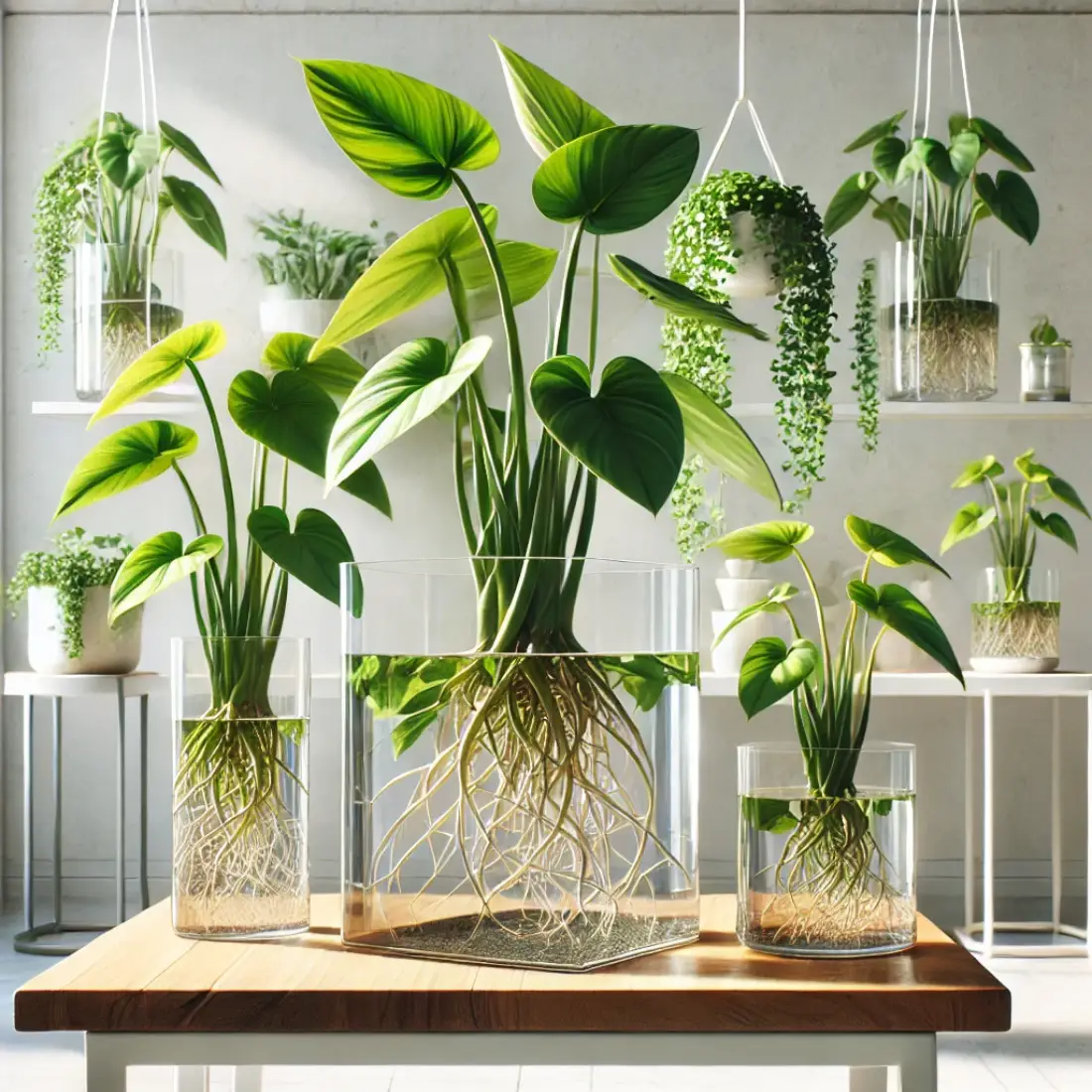
Care Tips: Change the water every two weeks and rinse the roots to prevent algae growth. Clip a healthy stem with nodes and place it in water to propagate.
Benefits: Philodendrons are excellent air purifiers, removing toxins such as formaldehyde, and add a lush, green touch to any indoor space.
Spider Plant
Description: Spider Plants are known for their long, arching leaves with green and white stripes. They produce small, white flowers and baby plantlets, called “spiderettes.”
Growing Conditions: Spider Plants thrive in water with indirect sunlight. They are resilient and can adapt to various light conditions.
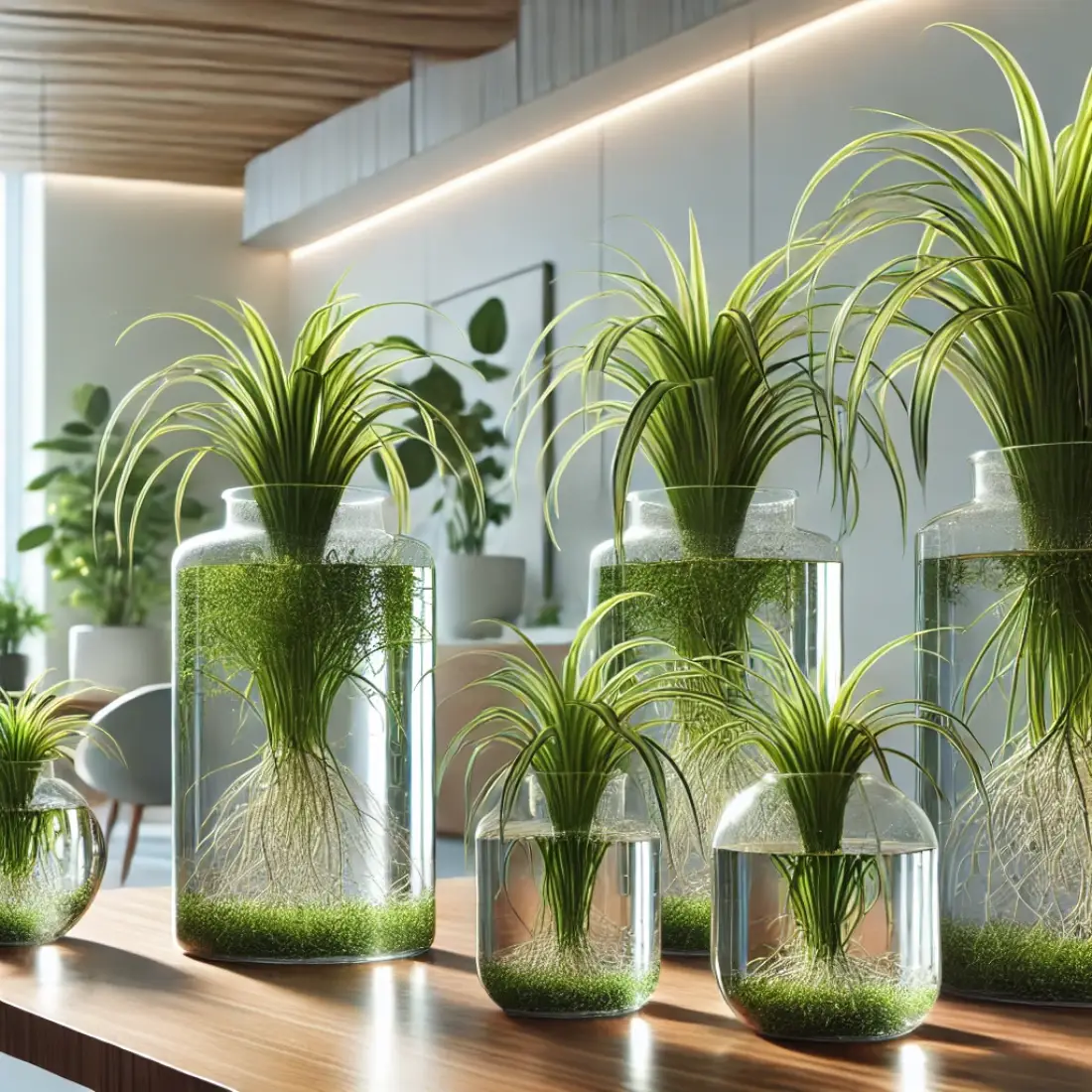
Care Tips: Change the water every two weeks and ensure the roots are submerged. Propagate by placing spiderettes in water until they develop roots, then transfer them to a new container.
Benefits: Spider Plants are effective air purifiers, removing toxins like formaldehyde and xylene, and are easy to care for, making them perfect for beginners.
English Ivy
Description: English Ivy is a versatile, trailing plant known for its small, lobed leaves and vigorous growth. It can be trained to climb or cascade, adding a decorative touch to any space.
Growing Conditions: English Ivy grows well in water with indirect sunlight. It prefers cool environments and can thrive in low light conditions.
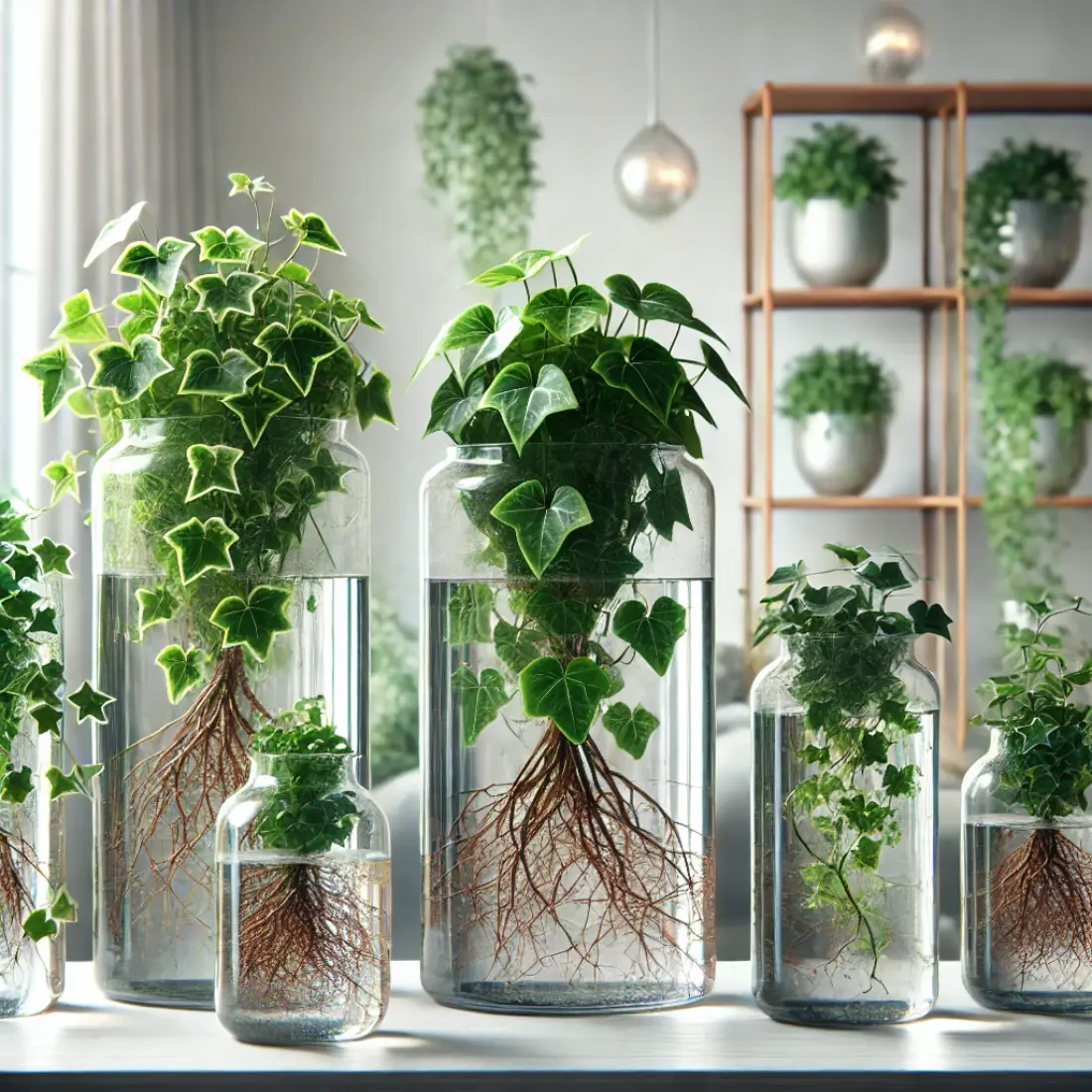
Care Tips: Change the water every two weeks and rinse the roots to prevent algae buildup. Cut a healthy stem with a few leaves and place it in water to propagate.
Benefits: English Ivy is renowned for its air-purifying qualities, effectively removing mold spores and other airborne toxins.
Chinese Evergreen
Description: Chinese Evergreen, also known as Aglaonema, is admired for its striking, variegated leaves that come in various shades of green, silver, and red. It’s a popular choice for its beauty and resilience.
Growing Conditions: Chinese Evergreen thrives in water with low to moderate light. It prefers warm temperatures and high humidity.
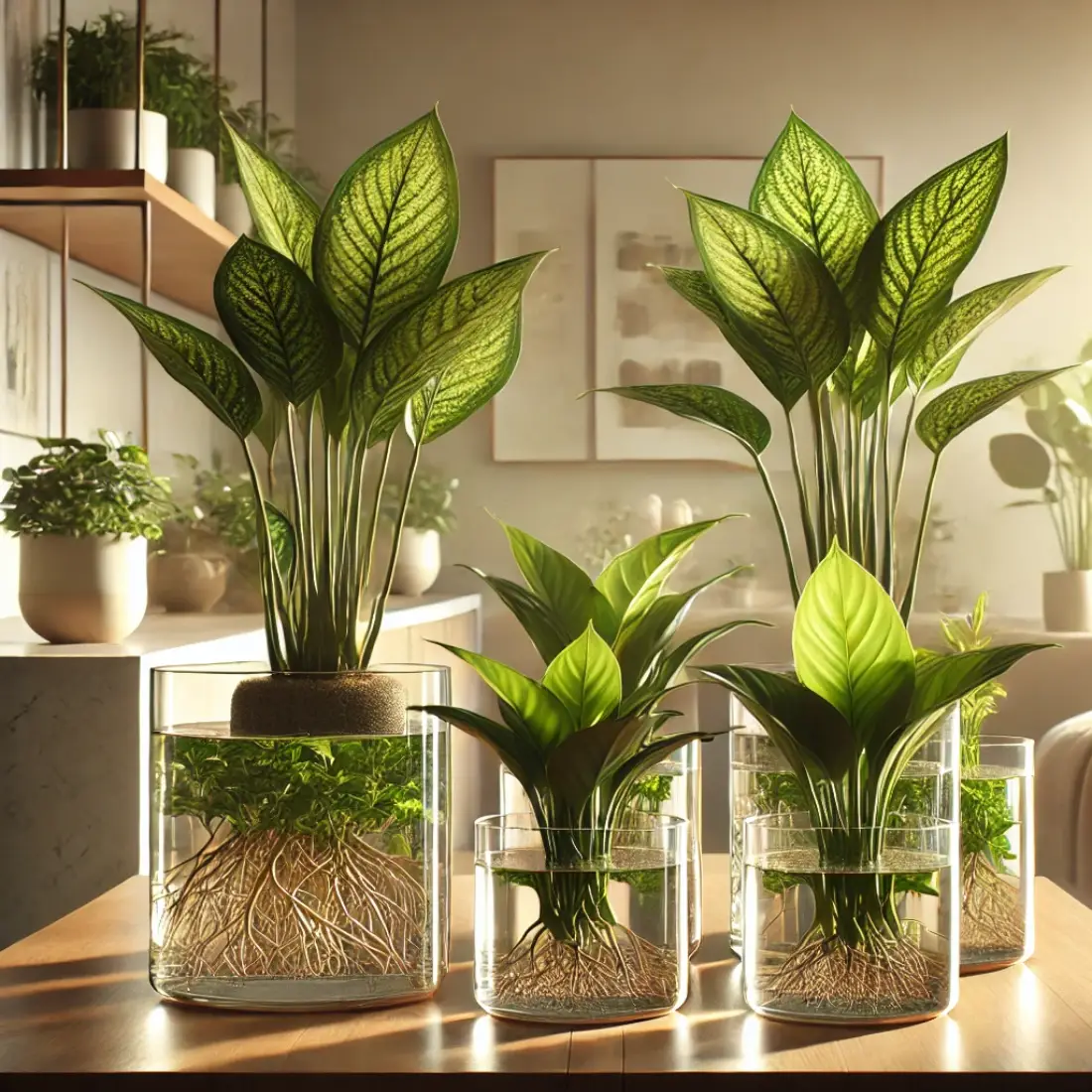
Care Tips: Change the water every two weeks and ensure the roots remain submerged. To propagate, cut a stem just below a node and place it in water until roots develop.
Benefits: Chinese Evergreen is low-maintenance and known for its air-purifying properties, effectively removing toxins such as benzene and formaldehyde.
Syngonium
Description: Syngonium, also known as Arrowhead Plant, is a popular houseplant characterized by its arrow-shaped leaves and vibrant green hues. It’s an attractive plant that can be grown as a climber or a bushy plant.
Growing Conditions: Syngonium grows well in water with indirect sunlight. It prefers a warm, humid environment to thrive.
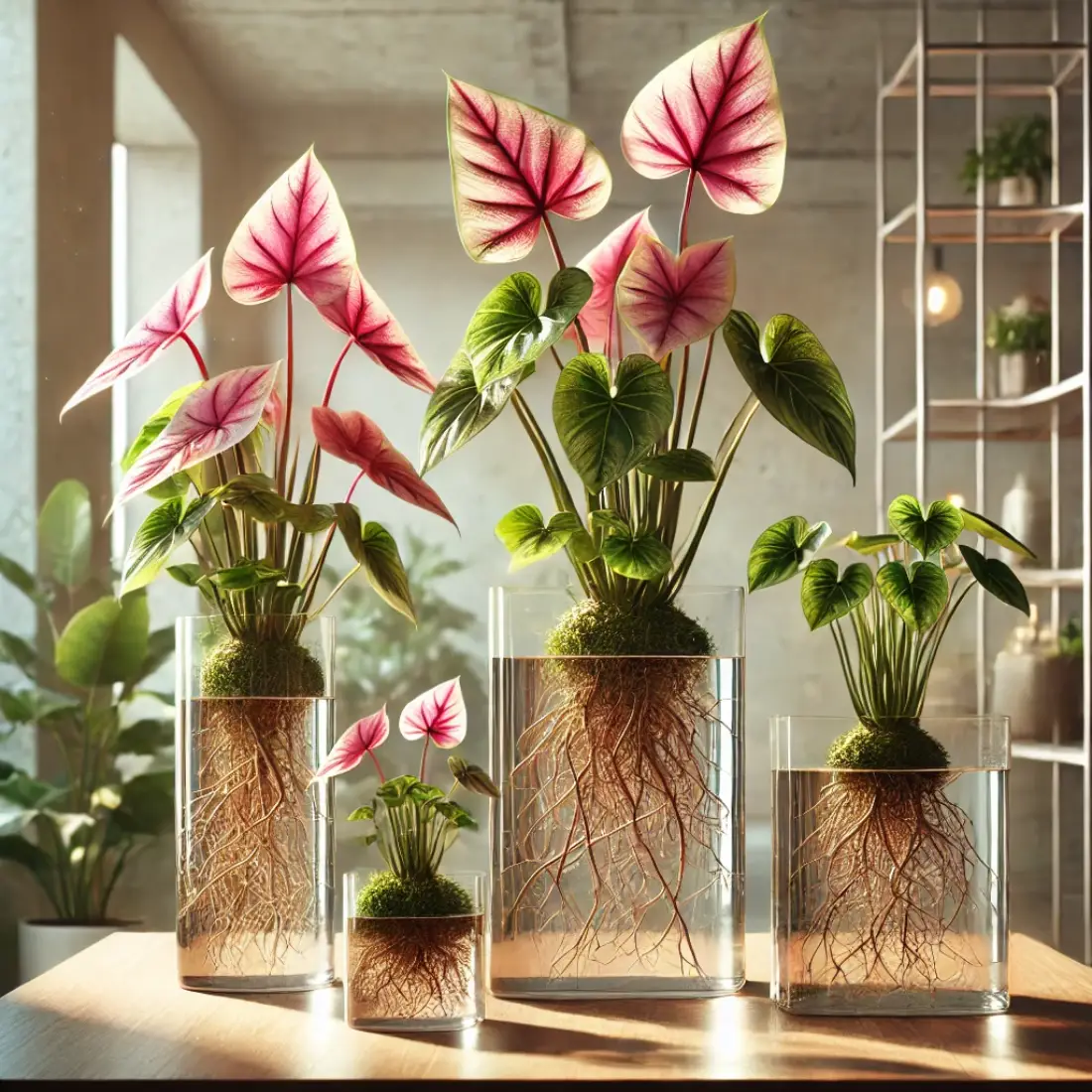
Care Tips: Change the water every two weeks and keep the roots submerged. To propagate, cut a stem below a node and place it in water until roots form.
Benefits: Syngonium is easy to care for and helps purify indoor air by removing toxins like formaldehyde and benzene.
Peace Lily
Description: Peace Lilies are elegant plants known for their glossy, dark green leaves and striking white blooms. They are a favorite for adding a touch of beauty and tranquility to indoor spaces.
Growing Conditions: Peace Lilies thrive in water with indirect sunlight. They prefer warm temperatures and moderate humidity levels.
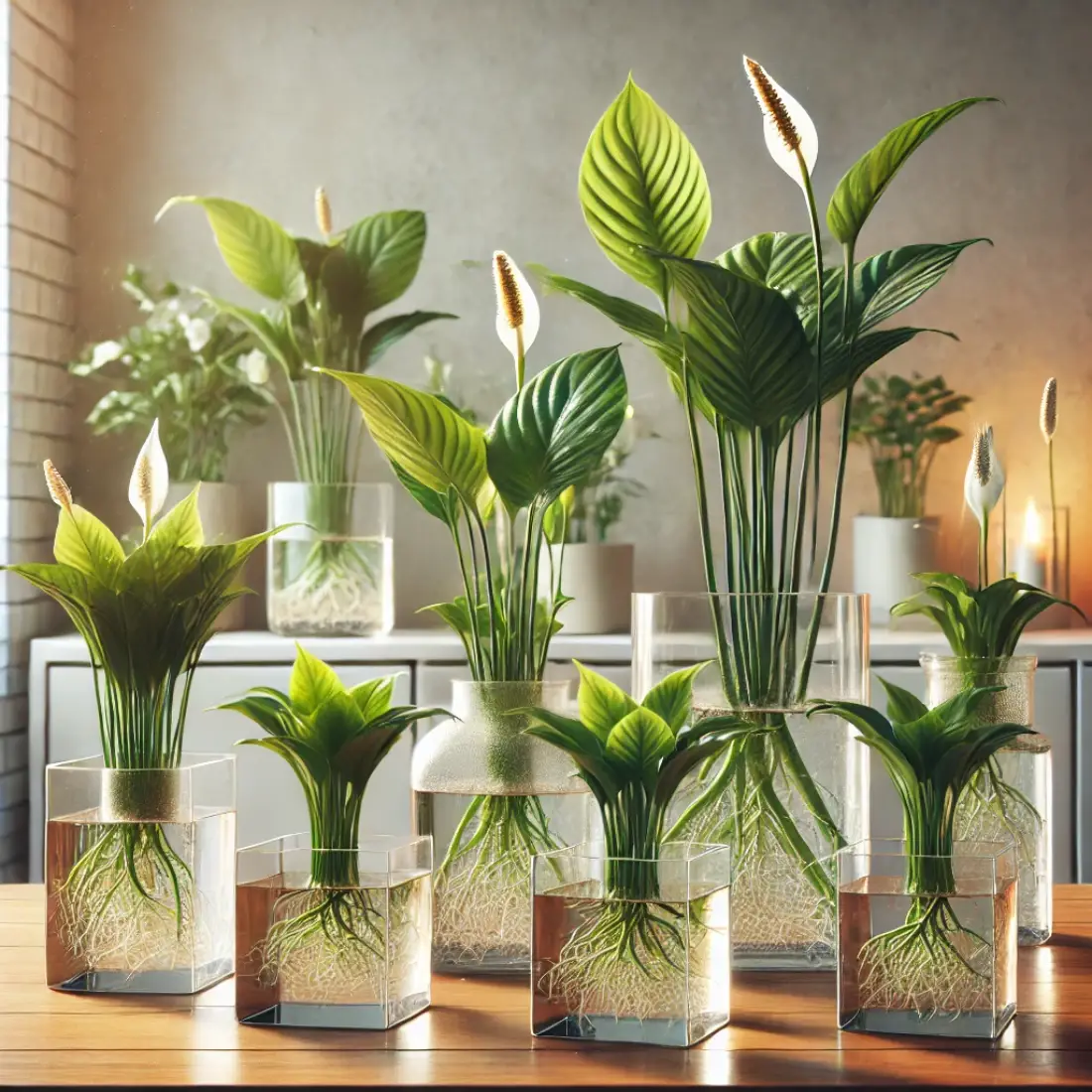
Care Tips: Change the water every two weeks and ensure the roots are always submerged. Use distilled or filtered water to avoid chlorine and other chemicals. To propagate, cut a stem with a leaf and place it in water until roots develop.
Benefits: Peace Lilies are excellent air purifiers, removing toxins like ammonia, benzene, and formaldehyde from the air.
Wandering Jew
Description: Wandering Jew, known for its vibrant, purple-striped leaves and rapid growth, is a popular trailing plant that adds a splash of color to any indoor space.
Growing Conditions: Wandering Jew thrives in water with bright, indirect sunlight. It prefers a warm environment and can adapt to various humidity levels.
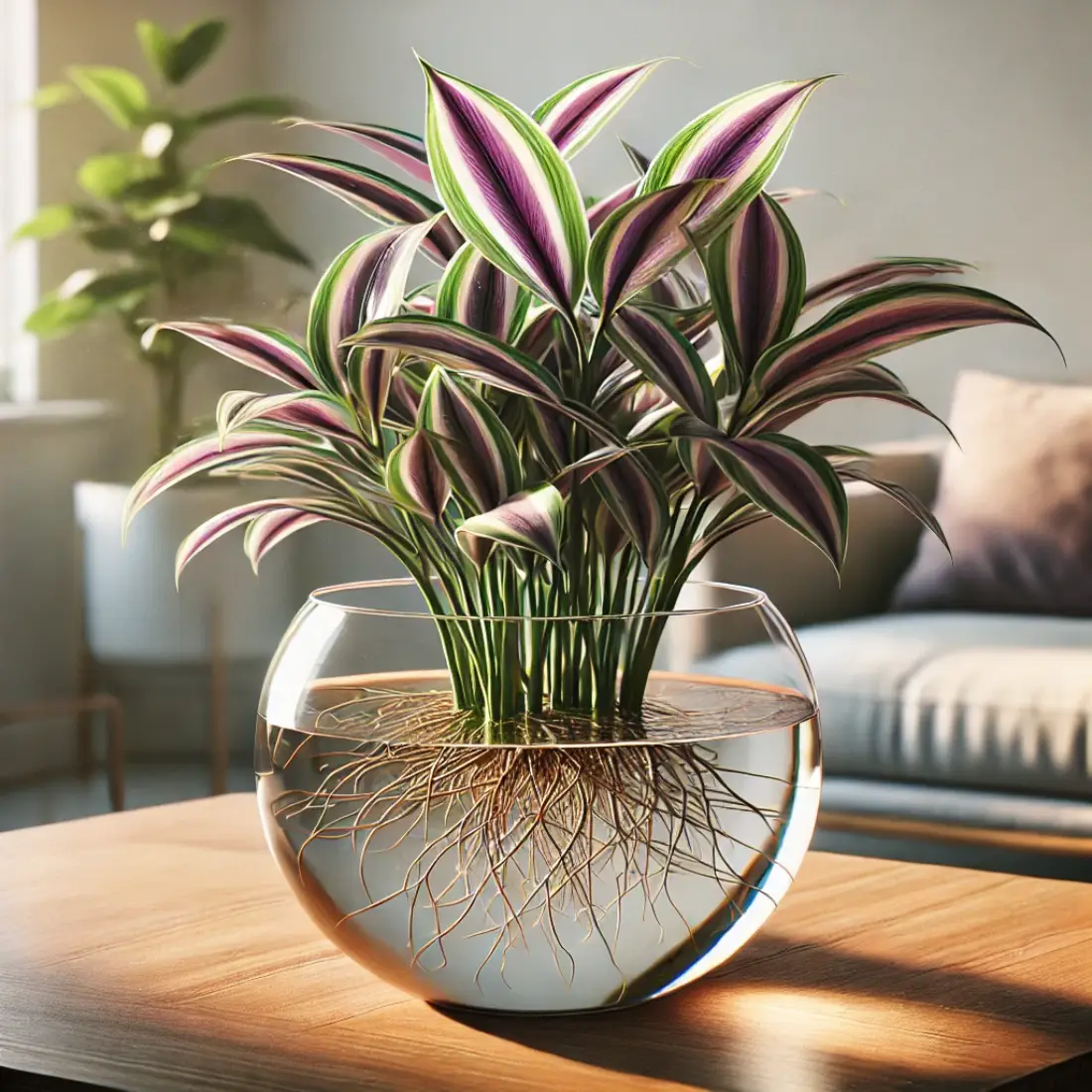
Care Tips: Change the water every two weeks and ensure the roots are submerged. To propagate, cut a stem with a few nodes and place it in water until roots form. Regularly trim the plant to maintain its shape and encourage bushier growth.
Benefits: Wandering Jew is easy to care for and brings a unique aesthetic appeal with its colorful foliage.
Mint
Description: Mint is a fragrant herb known for its refreshing aroma and culinary uses. It has bright green leaves and can be grown easily indoors in water.
Growing Conditions: Mint thrives in water with bright, indirect sunlight. It prefers a warm environment and can grow rapidly under the right conditions.
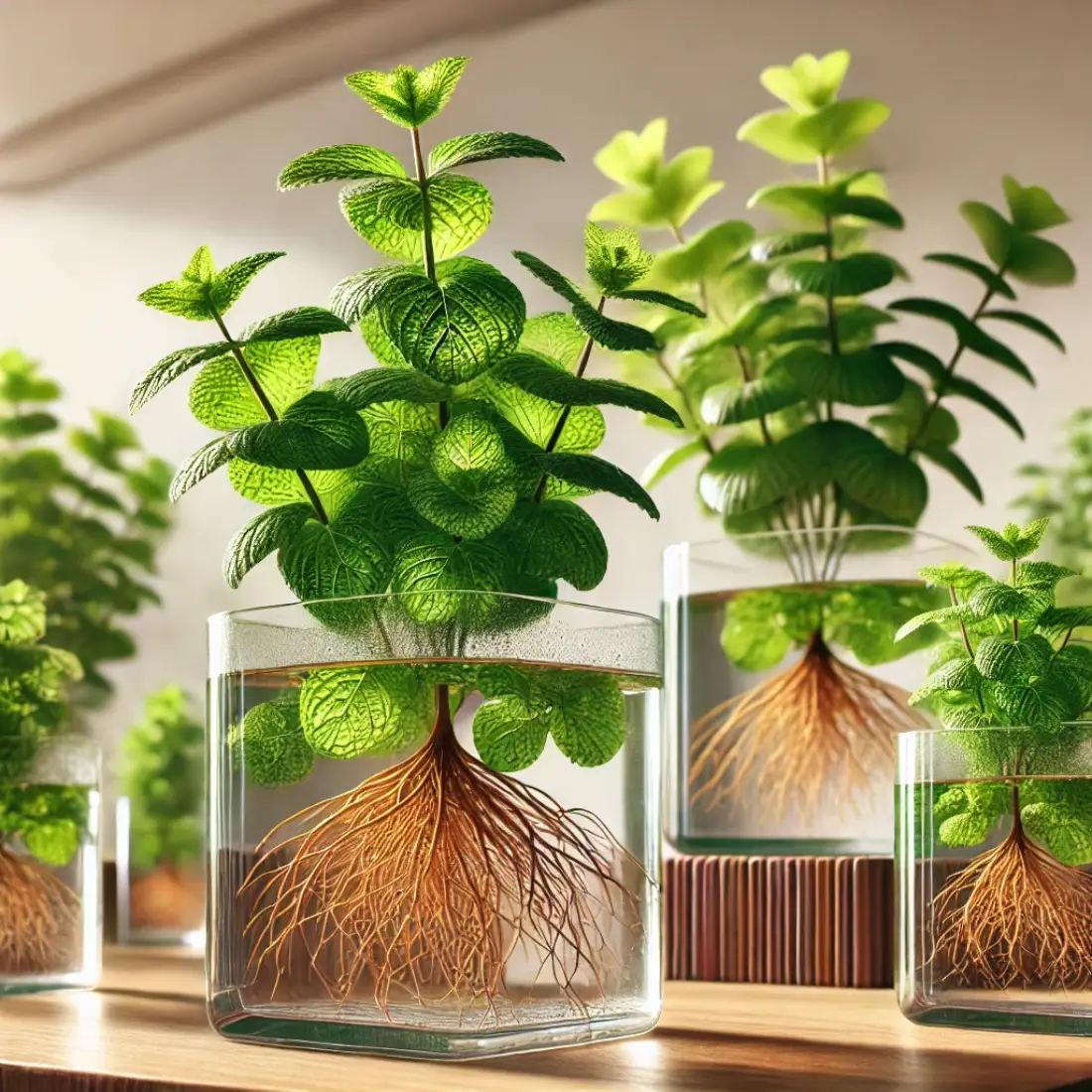
Care Tips: Change the water every week to prevent stagnation and algae growth. Ensure the roots are submerged and trim regularly to encourage bushier growth. To propagate, place a healthy cutting with nodes in water until roots develop.
Benefits: Mint is not only easy to grow but also provides fresh leaves for cooking and drinks, while its pleasant scent can enhance indoor air quality.
FAQs about Growing Plants in Water
What are the benefits of growing plants in water?
Growing plants in water reduces the need for soil, making it a cleaner and more straightforward option for indoor gardening. It minimizes pest issues and simplifies maintenance. Additionally, many water-grown plants have air-purifying properties, improving indoor air quality.
How often should I change the water for these plants?
It’s recommended to change the water every two weeks. This helps prevent stagnation and algae growth, ensuring the plants have a clean environment to thrive in.
Can all houseplants grow in water?
Not all houseplants can grow in water. However, many popular varieties, such as Pothos, Philodendron, and Spider Plant, can thrive in water. Researching specific plant requirements is essential to determine suitability.
Do I need to add nutrients to the water?
While many plants can grow in plain water for some time, adding a diluted liquid fertilizer occasionally can promote healthier growth and provide essential nutrients that water alone may not supply.
How do I propagate plants in water?
Propagation involves cutting a healthy stem below a node and placing it in water. Ensure the leaves are above the waterline while the nodes are submerged. Roots will typically develop within a few weeks.
What type of water should I use for growing plants?
It’s best to use distilled or filtered water to avoid chlorine, fluoride, and other chemicals found in tap water. If using tap water, let it sit out for 24 hours to allow chlorine to evaporate before using it for your plants.
Can water-grown plants be transferred to soil?
Yes, many water-grown plants can be transferred to soil. Gradually acclimate the plant by introducing it to soil while keeping the roots moist. This transition process should be done carefully to avoid shock.
How do I prevent algae growth in the water?
To prevent algae growth, change the water regularly and use opaque containers to limit light exposure. Rinsing the roots and container during water changes can also help reduce algae buildup.
What are some common problems with water-grown plants?
Common issues include root rot, algae growth, and nutrient deficiencies. Regularly changing the water, providing adequate light, and occasionally adding liquid fertilizer can help mitigate these problems.
Can I grow herbs in water?
Yes, many herbs, such as mint, basil, and oregano, can be successfully grown in water. They are easy to propagate and provide fresh herbs for culinary use, making them a practical and enjoyable addition to your indoor garden.

